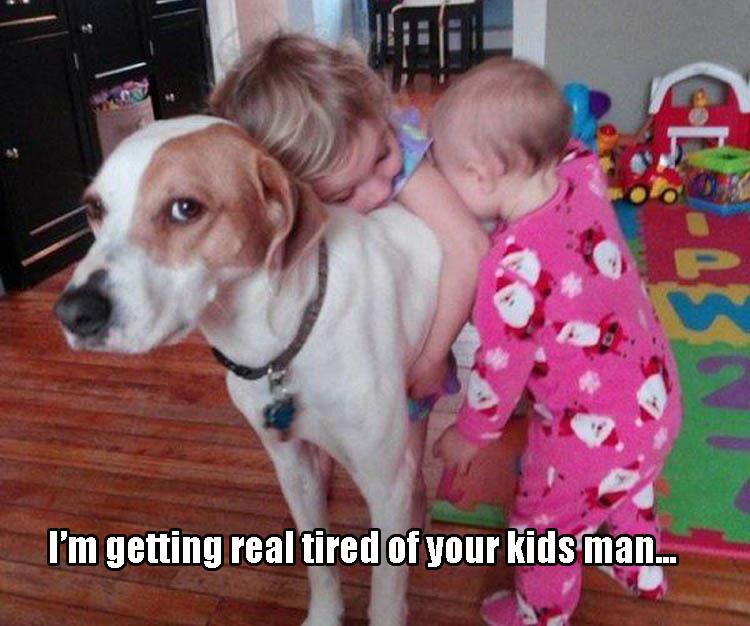

A picture was recently going around social media sites of a cute toddler with her arms tightly hugging a Great Dane’s neck, giving him a big kiss on the face. The little girl was adorable. The dog was adorable. And it made me wince to see it.
It was a nice dog, a patient dog, and a wonderful family dog I’m sure. Likely that dog and child will have a wonderful relationship that will enrich both of their lives. Or it could end tragically with a dog bite and a one way trip to animal control.
Dogs are a wonderful part of family life for a child growing up. Dogs are great playmates, comforters, and teachers for kids, and dogs love the extra love, extra treats, and extra fun that children provide. For their safety, though, it is important to teach young children dog manners and rules. Young kids can be rude and, let’s face it, annoying at times and dogs don’t have the same resources we do as parents to stop annoying behavior and even the most patient dogs may react with a snap, snarl or bite if they feel threatened enough.
If your child is pulling your hair, sitting on your head, stealing your food off your plate, screaming in your face, or poking in your ears, you can discipline the child or avoid being pestered by standing up, leaving the room, or (best bet) hiring a babysitter for the night. Dogs can’t escape the situation on their own, and they can’t ask for help or tell the child to stop in a language they’ll understand.
The most important rules for a child to learn about dog manners are:
1. Always ask the owner if it’s ok before petting a strange dog.
2. Wait for a dog to come to you, and then pet on the back rather than the head or tail. If he doesn’t come to you he may not want to be petted.
3. Don’t hug a dog. Save your hugs for your human family! Don’t kiss a dog’s face.
4. Don’t climb on a dog or pull his hair.
5. Don’t bother or tug on a dog’s ears, mouth, tail, or feet.
6. Don’t interrupt a dog that is eating and don’t take a dog’s toy away.
7. Don’t bother a dog in his private space (crate or bed)
8. If you are playing with a dog and he leaves don’t follow him around, he needs a break. He will come back when he’s ready to play again!
9. Be especially gentle with old dogs or dogs who aren’t feeling well.
It is equally important to teach your dog kid manners. Make sure your dog has some basic training before introducing him to a child, including a good sit-stay, come, and leave it/drop it command. Also make sure your dog has a quiet place that he can retreat to such as a crate or a doggie door to the yard so he can escape a situation he thinks is threatening or when he has just had enough.
Check out this fun guide to dog body language to help your child understand. It’s a great chance to learn!
And you can read more about kids and dog safety here.